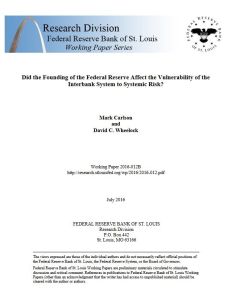Join getAbstract to access the summary!

Join getAbstract to access the summary!
Mark Carlson and David C. Wheelock
Did the Founding of the Federal Reserve Affect the Vulnerability of the Interbank System to Systemic Risk?
Federal Reserve Bank of St. Louis, 2016
What's inside?
Is the Federal Reserve adequately serving the purposes its founders intended for it?
Recommendation
As the US Federal Reserve finds itself in a damned-if-you-do-and-damned-if-you-don’t situation following the 2008 financial crisis, whereby its critics accuse it of either doing too much or doing too little, it’s illuminating to look into the history of the institution and how the presence of a lender of last resort has influenced bank soundness and liquidity in the United States. Economists Mark Carlson and David C. Wheelock weigh the question of whether the central bank has addressed the systemic deficiencies it aimed to tackle. getAbstract suggests this informative report to bankers, economists and economic historians for the perspective it provides on the Fed.
Summary
About the Authors
Mark Carlson is a principal economist with the Board of Governors of the Federal Reserve System. David C. Wheelock is the deputy director of research at the Federal Reserve Bank of St. Louis.


















Comment on this summary